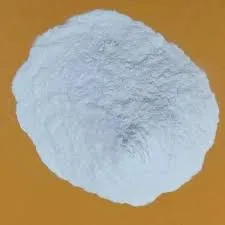
Nov . 24, 2024 04:11 Back to list
Ashland Hydroxyethyl Cellulose Applications in Various Industries and Its Unique Properties
Understanding Ashland Hydroxyethyl Cellulose Properties, Applications, and Benefits
Hydroxyethyl cellulose (HEC) is a non-ionic, water-soluble polymer derived from cellulose, used widely in various industries due to its unique properties. Among the leading producers of this valuable compound is Ashland, a global leader in specialty chemicals and materials. Ashland's hydroxyethyl cellulose stands out for its versatility and effectiveness, making it a crucial component in numerous applications ranging from personal care products to construction materials.
Properties of Ashland Hydroxyethyl Cellulose
Ashland's hydroxyethyl cellulose exhibits several critical properties that enhance its functionality. These include exceptional thickening, binding, film-forming, and stabilizing abilities. Moreover, HEC is known for its high viscosity, which can be adjusted based on the molecular weight. This characteristic makes it suitable for applications requiring varying degrees of thickness.
One of the most significant benefits of HEC is its ability to retain water, which promotes moisture control in various formulations. This water retention property is particularly vital in personal care products like lotions and creams, where hydration is key to skin health and comfort. Furthermore, HEC is chemically stable, remaining effective and safe across a wide range of pH levels and temperatures, which adds to its appeal in diverse manufacturing processes.
Applications of Ashland Hydroxyethyl Cellulose
Ashland's hydroxyethyl cellulose is widely utilized across several industries
1. Personal Care and Cosmetics In skincare formulations, HEC serves as a thickener, emulsifier, and stabilizer. Its ability to enhance the texture and application experience of creams and serums is invaluable. Additionally, it provides a smooth, spreadable consistency, which is essential for products like shampoos, conditioners, and gels.
ashland hydroxyethyl cellulose

2. Pharmaceuticals In the pharmaceutical industry, HEC is employed as a binder and thickening agent in tablets and suspensions. Its biocompatibility and non-toxicity make it a reliable choice for drug formulations, ensuring that active ingredients are effectively delivered.
3. Construction In construction materials like mortars and adhesives, HEC improves workability and extends open time. This property is critical for ensuring that materials remain workable for longer periods, allowing for more efficient application and bonding.
4. Food Industry HEC is also used as a food additive, primarily as a thickener or stabilizer in various products, such as sauces and dressings. Its ability to improve texture while remaining safe for consumption underscores its versatility.
Benefits of Using Ashland Hydroxyethyl Cellulose
The advantages of incorporating Ashland hydroxyethyl cellulose into formulations are manifold. First and foremost, HEC enhances product performance, improving texture and stability. Its natural origin, derived from cellulose, appeals to consumers seeking clean-label products, as it aligns with a growing demand for sustainable and environmentally friendly ingredients.
Moreover, HEC’s ease of use makes it an attractive option for manufacturers. It is readily available and can be incorporated into both hot and cold processes without compromising its properties. Its compatibility with a variety of other ingredients also makes it an ideal additive in complex formulations.
In conclusion, Ashland’s hydroxyethyl cellulose is a remarkable component that brings significant advantages across various applications. Its unique properties, coupled with its versatility, continue to make it an indispensable resource in industries ranging from cosmetics to construction. As the demand for innovative and sustainable materials grows, hydroxyethyl cellulose is poised to play an increasingly important role in shaping the future of product formulation. Whether enhancing the feel of a lotion or improving the performance of a construction adhesive, Ashland's HEC demonstrates the power of functional ingredients in modern product development.
-
Versatile Hpmc Uses in Different Industries
NewsJun.19,2025
-
Redispersible Powder's Role in Enhancing Durability of Construction Products
NewsJun.19,2025
-
Hydroxyethyl Cellulose Applications Driving Green Industrial Processes
NewsJun.19,2025
-
Exploring Different Redispersible Polymer Powder
NewsJun.19,2025
-
Choosing the Right Mortar Bonding Agent
NewsJun.19,2025
-
Applications and Significance of China Hpmc in Modern Industries
NewsJun.19,2025







